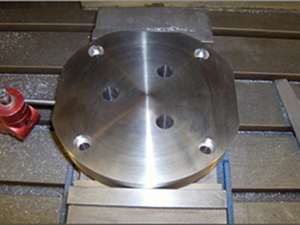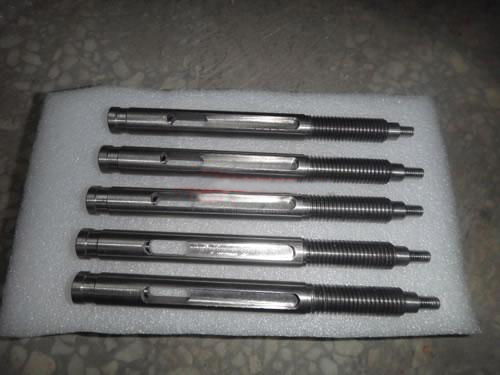Tungsten Alloy Rotating Inertia Members
Description
1. Tungsten Alloy Rotating Inertia Members
Introduction
The high density and unique physical properties of tungsten alloys enable components to be rotated at extremely high speeds and provide increased momentum using less space. Tungsten alloy rotating inertia members possess a high elastic modulus, high strength and density, low magnetism, and good machinability, which enable our tungsten heavy alloy to be used in lots of applications.
Application
Our excellent high-density tungsten alloys are used for gyro rotors, navigation devices, inertial guidance systems, and rotating members for governors.
2. Tungsten Receptors
Introduction
Tungsten receptors are used as components for lightning protection system. Wind turbines are often constructed in flat areas. Their large spans and rotation make them a preferred point of impact for lightning strikes.
When struck by a lightning, the blade tip absorbs within a few milliseconds currents from 30 to 200 kA, which will generate local temperatures up to 10 000°C. This violent electrical and thermal shock can destroy the blade and stop the wind turbine. Beyond the instant reduction of power production, financial burden of repairs are so high that a competitive protection system is a must to increase productivity, safety and reduce maintenance costs.
After placing the tungsten receptors in the wind turbines, the lightning harm can be greatly reduced and a competitive protection system can be ensured. We are committed to satisfactory products with appropriate content and dimensions. Welcome your contact.
Performance of Tungsten Alloy Rotating Inertia Members
| Tungsten Heavy Metal Grade Chart | |||||||
| MIL-T-21014 Rev D | Class 1 | Class 2 | Class 3 | Class 4 | Class 1 | Class 2 | Class 3 |
| SAE-AMS-T-21014 | Class 1 | Class 2 | Class 3 | Class 4 | Class 1 | Class 2 | Class 3 |
| ASTM B777-07 | Class 1 | Class 2 | Class 3 | Class 4 | Class 1 | Class 2 | Class 3 |
| AMS 7725 C | 7725 C | 7725 C | |||||
| Matrix (wt. %) | 90.0% W | 92.5% W | 95.0% W | 97.0% W | 90.0% W | 92.5% W | 95.0% W |
| Binder (wt. %) | 10.0% Ni-Fe | 7.5% Ni-Fe | 5.0% Ni-Fe | 3.0% Ni-Fe | 10.0% Ni-Cu | 7.5% Ni-Fe | 5.0% Ni-Cu |
| Nominal Density (g/cm3) | 16.85-17.25 | 17.15-17.85 | 17.75-18.35 | 18.25-18.85 | 16.85-17.25 | 17.15-17.85 | 17.75-18.35 |
| Nominal Density (lb/in3) | 0.614 | 0.632 | 0.650 | 0.668 | 0.614 | 0.632 | 0.650 |
| Typical Hardness (Rc) | 26 | 26 | 28 | 30 | 26 | 26 | 28 |
| Ultimate Tensile Strength - Min. (psi) | 110,000 | 110,000 | 105,000 | 100,000 | 94,000 | 110,000 | 94,000 |
| 0.2% Offset Yield Strength - Min. (psi) | 75,000 | 75,000 | 75,000 | 75,000 | 75,000 | 75,000 | 75,000 |
| Magnetic Characteristics | Slightly magnetic | Slightly magnetic | Slightly magnetic | Slightly magnetic | Nonmagnetic | Nonmagnetic | Nonmagnetic |
Package and Transportation
We pack tungsten alloy rotating inertia members and tungsten receptors in plywood case and send them by ocean or air.

- Tungsten Alloy High-Temperature Molding PartTungsten alloy high temperature tooling is also called as tungsten alloy extrusion dies or die casting components. Tungsten alloy can save time and money in hot metal working. The high tungsten content offers good resistance to thermal ...






